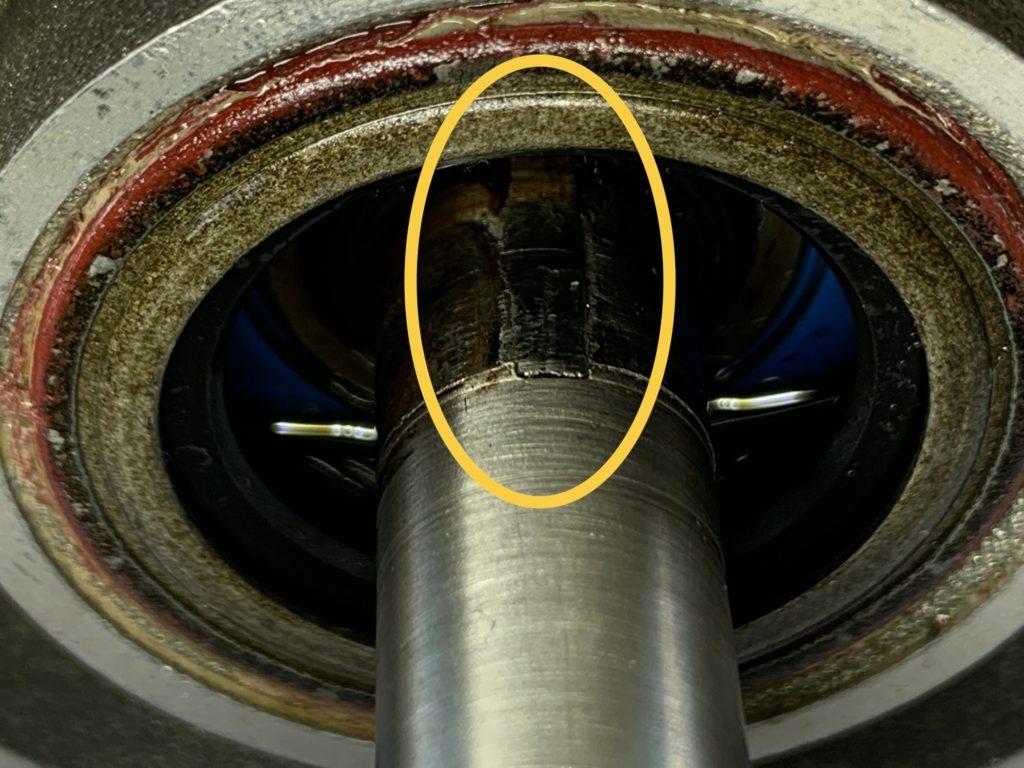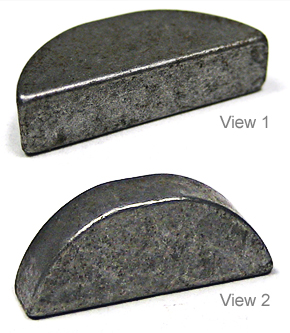Podcast: Play in new window | Download
This was what happened recently in a Piper Seneca… and in this episode, we discuss why the alternator quit… it was something I totally was not expecting.
After verifying the field connections (power and ground) were good, and the brushes were nearly perfect, I removed the alternator.
And here is what I found… watch this video:
It was two things, really. First, the nut holding the drive coupling onto the alternator shaft was loose. And second, the drive gear was turning independently of the alternator shaft… not good! The drive coupling is like a clutch that is designed to slip at a preset high torque value in case the alternator seizes.
I had to look closely to really see what had happened… and I discovered the woodruff key that holds the drive coupling securely to the alternator shaft, had completely sheared off, and the remaining portion of the woodruff key was barely visible in the alternator shaft after I removed the drive coupling… check it out:

And, after the woodruff key sheared off, the drive coupling and gear kept turning while the alternator was not turning, and it wore the alternator shaft right down to the shiny surface you see here.
In case you’re not familiar with a woodruff key, here’s what they look like new, and you can buy them at Aircraft Spruce and other places:

The rounded part goes down into a slot in the alternator drive shaft, and the straight part sticks out of the shaft and engages with the drive coupling as you slide the drive coupling down onto the alternator shaft.
Continental has very specific instructions for installing the drive coupling onto the alternator, along with a specific torque value, and very specific instructions for installing the cotter pin.
In this case, we ordered an overhauled alternator (because the shaft was worn and the remaining woodruff key was stuck in the worn shaft,) an overhauled drive coupling (because the slot for the woodruff key was worn,) and a new special nut for the drive coupling (because the old one was worn due to spinning against the gear/drive coupling.)
So, why did this happen? I’m not sure, but I’m guessing the nut was not torqued properly way back when it was installed at engine overhaul about 400 hours ago.
And my next question is, “What about the left engine alternator?” And did the same person install that one? Perhaps we should remove and inspect that one as well.
Here’s another question I’ve been pondering that relates to the title of this episode: “Why did the alternator fail when he put the gear up?”
And here’s my guess: The drive coupling and woodruff key had been wearing over a long period of time, and was barely hanging on, and finally when it was very weak, at the moment the landing gear pump was activated, it caused a momentary surge of amperage draw, just enough to put an increased load on the alternator, and the small bit of remaining woodruff key sheared off completely and the drive gear was free-wheeling at that point, with the alternator shaft remaining still, making it impossible to produce any more electrical power output.
That’s my theory.
And you may wonder, how did the whole thing turn out?
While I would have liked to finish the repair, I was not able to be in the shop the next day, so another A&P installed everything, and the owner took off for a big trip to the South the next day.
If the alternator had to fail, it happened at the perfect time. It was just after a good long 1 hour plus flight to break in a freshly installed repaired cylinder on the left engine, but before the owner blasted off for a long trip in the airplane… amazing.
And that’s another story we covered in this episode… the left engine #3 cylinder had to be changed due to a burning exhaust valve. Check it out:

The compression in this cylinder was 11/80, and then we found the burning exhaust valve with the borescope. This photo was taken after removing the cylinder.
If this valve had been found earlier, perhaps it could have been saved by lapping and installing a new rotocoil, but since it was too far gone with a green edge due to severe burning and wear on the seating area, it had to be removed.
One more interesting thing about this whole scenario is the owner has had some concerning oil analysis reports from both engines recently, and he’s been trying to get to the bottom of it. Hopefully, after repairing the left engine cylinder #3, including a new exhaust valve and valve guide, and no longer having a woodruff key coming apart in the right engine, the oil analysis reports will be much better moving forward… we’ll see.
Here are a few other items we talked about in this episode:
- The turbo Cessna 182 RG that’s ready to fly again after a big annual inspection and cam / lifter change in the engine.
- A prebuy on a really nice Mooney M20C.
- My good friend Dave Ovad and some fuel system work and landing gear work we did on his nice A36 Bonanza. And just to document this, here’s the P/N for the little thin special washers that go on either side of the middle rod end for the nose gear system, at the idler arm connection at the aft end of the nose gear well: 100951CR016YF If you have a Bonanza and you’re going to replace the 3 nose gear rod ends, go ahead and order a couple of these inexpensive washers, because sometimes, they are missing!
- Another turbo-normalized Bonanza I’m currently doing an annual inspection on.
Well that’s all for this time… thanks for joining me!
The post “197 – When He Put the Gear Up the Right Alternator Quit” appeared first at AirplaneOwnerMaintenance.com


Recent Comments